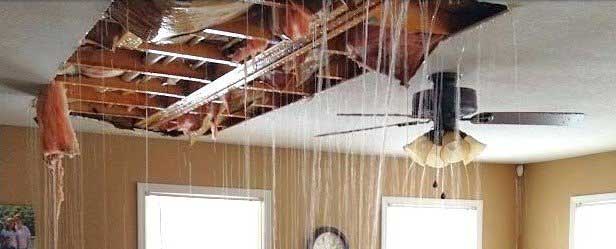Do's & Don'ts of Water Restoration.
Do's & Don'ts of Water Restoration.
Blog Article
This article in the next paragraphs in relation to 5 Home Safety Tips To Reduce The Risk Of Fire And Water Damage is without a doubt remarkable. You should check it out.

Though water gives life, water invasion on components where it's not supposed to be can result in damage. If the water soaks into your structure, it can peel away surfaces as well as deteriorate the structure. Mold and mildew also flourish in a moist atmosphere, which can be harmful for your health and wellness. Residences with water damages scent old and also stuffy.
Water can come from many resources such as typhoons, floodings, ruptured pipes, leaks, and sewage system concerns. In case you experience water damages, it would be great to know some safety precautions. Below are a couple of guidelines on how to deal with water damages.
Do Prioritize House Insurance Coverage Coverage
Water damages from flooding because of heavy winds is seasonal. However, you can additionally experience an abrupt flood when a defective pipe instantly breaks into your residence. It would certainly be best to have house insurance coverage that covers both disasters such as all-natural disasters, and also emergency situations like broken plumbing.
Do Not Fail To Remember to Turn Off Energies
This cuts off power to your whole residence, avoiding electric shocks when water comes in as it is a conductor. Do not forget to turn off the major water line valve.
Do Remain Proactive and also Heed Weather Notifies
Listen to evacuation warnings if you live near a river, creek, or lake . Doing so lowers possible property damage.
Don't Neglect the Roofing System
You can prevent rain damages if there are no holes and leaks in your roof covering. This will certainly prevent water from moving down your walls and saturating your ceiling.
Do Take Note Of Tiny Leakages
A burst pipeline doesn't take place overnight. Usually, there are warnings that show you have damaged pipelines in your home. You might discover bubbling paint, peeling off wallpaper, water streaks, water discolorations, or dripping audios behind the walls. Ultimately, this pipe will break. Ideally, you need to not wait for points to escalate. Have your plumbing repaired prior to it leads to substantial damage.
Don't Panic in Case of a Ruptured Pipeline
Keeping your presence of mind is crucial in a time of crisis. Because it will certainly suppress you from acting quickly, panicking will only intensify the trouble. When it comes to water damage, timing is crucial. The longer you wait, the more damage you can expect. Therefore, if a pipe bursts in your house, quickly shut off your main water valve to cut off the source. Unplug all electrical outlets in the area or turn off the circuit breaker for that part of the house. Finally, call a respectable water damages reconstruction professional for assistance.
Water offers life, water intrusion on parts where it's not expected to be can result in damage. Residences with water damages odor mildewy and old.
Water damage from flooding dues to heavy winds is seasonal. You may discover bubbling paint, peeling wallpaper, water streaks, water stains, or dripping sounds behind the walls. When it comes to water damage, timing is key.
Water Damage Do's and Don'ts
Do's
Always use rubber gloves to protect your hands & rubber boots to protect your feet and legs. Damage from water and bacteria growth can begin within hours. Call for professional help. Remove as much water as possible by mopping and blotting with sponges. Pull up wet rugs and carpets if hardwood floors are below. Lift draperies off the floor, loop through a coat hanger and place the hanger on the drapery rod. Wipe furniture, prop up wet furniture cushions for even drying and place aluminum foil under furniture legs. Move photos, paintings, art objects, computers, other electronics and valuables to a safe, dry location. Do not remove books from shelves. Pack them tightly to prevent page warping until a restoration professional can begin this specialized drying. Ventilate wet areas. Turn on air conditioning for faster drying in summer (only if there is no visible mold) and winter, alternate cycles of opened windows and heating. Also, open drawers, closets and cabinet doors to enhance drying. Don'ts
Do not enter rooms where there is wet and sagging ceiling! Do not enter a room with standing water until electricity has been turned off. Do not use a regular household vacuum to remove water. Use heat to dry closed building interiors. Mildew and more moisture damage can occur. Do not use electrical appliances while on wet carpet or flooring. Do not disturb visible mold. https://www.myknowledgebroker.com/blog/personal-insurance/water-damage-dos-and-donts/

I was shown that article about Keeping Your Home Safe This Holiday Season from an associate on a different web property. Feel free to take the time to promote this blog entry if you liked it. Thank you for your time invested reading it.
Report this page